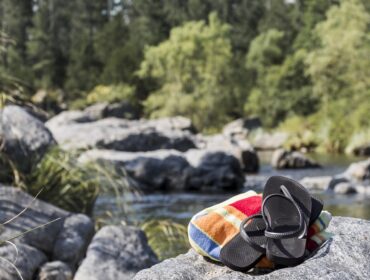Microplastics have become a pervasive environmental issue, infiltrating oceans, freshwater systems, and even our bodies. The outdoor apparel industry, a significant contributor to microplastic pollution, is under increasing pressure to innovate and reduce its environmental footprint. In 2025, several leading brands are taking proactive steps to address this challenge through sustainable materials, innovative designs, and consumer education.
Understanding the Microplastic Problem
Microplastics are tiny plastic particles less than 5mm in size, often originating from synthetic fibers like polyester and nylon. When these materials shed during washing or wear, they enter wastewater systems and eventually the environment. The outdoor clothing industry is a major source, with synthetic textiles accounting for a significant percentage of global microplastic pollution.
Brands Leading the Charge
1. Patagonia
Patagonia has long been a pioneer in sustainable practices. In 2025, the company continues to lead by example, focusing on reducing microplastic pollution through:
-
Material Innovation: Transitioning to natural fibers like organic cotton and wool, which biodegrade and shed fewer microfibers.
-
Consumer Education: Encouraging customers to reduce washing frequency and use microfiber filters to capture shedding fibers.
-
Recycling Initiatives: Promoting the reuse and recycling of garments to extend product life and reduce waste.
2. Arms of Andes
A newer entrant in the outdoor apparel market, Arms of Andes is making waves with its commitment to zero-waste and biodegradable gear. Their products are crafted from 100% Royal Alpaca Wool, known for its softness, durability, and minimal environmental impact. By choosing natural fibers, Arms of Andes significantly reduces the release of microplastics into the environment.
3. Royal Robbins
Royal Robbins, a brand with a rich history in adventure clothing, has embraced sustainability by:
-
Utilizing Natural Fibers: Incorporating materials like hemp, Tencel modal, cotton, and Merino wool into their designs.
-
Ethical Sourcing: Collaborating with suppliers who adhere to strict environmental and ethical standards.
-
Innovative Technologies: Developing eco-friendly mosquito protection technologies that do not rely on harmful chemicals.
4. Mammut
Mammut has introduced the Crag IN Jacket, which features:
-
Recycled Materials: Utilizing repurposed climbing ropes for insulation.
-
PFC-Free Fabrics: Employing polyamide outer shells and polyester insulation that are free from per- and polyfluoroalkyl substances (PFAS), also known as “forever chemicals”.
The Shift Towards Natural and Recycled Materials
The industry’s move towards natural and recycled materials is a direct response to the growing awareness of microplastic pollution. Brands are increasingly:
-
Adopting Biodegradable Fabrics: Using materials like organic cotton, hemp, and wool that naturally decompose without releasing harmful microplastics.
-
Incorporating Recycled Synthetics: Utilizing recycled polyester and nylon to reduce the demand for virgin plastic and minimize fiber shedding.
-
Developing Performance Blends: Creating hybrid fabrics that combine the durability of synthetics with the sustainability of natural fibers, aiming to balance performance with environmental impact.
Consumer Actions to Mitigate Microplastic Pollution
Consumers play a crucial role in reducing microplastic pollution. Simple actions can make a significant difference:
-
Use Microfiber Filters: Installing filters in washing machines to capture shedding fibers.
-
Wash Less Frequently: Reducing the number of washes can decrease fiber release.
-
Opt for Natural Fibers: Choosing garments made from materials like cotton, wool, and hemp can reduce microplastic pollution.
-
Support Sustainable Brands: Purchasing from companies committed to sustainable practices encourages industry-wide change.
The Road Ahead
While progress is being made, the fight against microplastic pollution requires continued innovation and collaboration. Brands, consumers, and policymakers must work together to:
-
Develop Advanced Filtration Technologies: Enhancing wastewater treatment systems to capture microplastics effectively.
-
Implement Extended Producer Responsibility: Holding manufacturers accountable for the entire lifecycle of their products.
-
Advocate for Policy Changes: Supporting legislation that regulates microplastic emissions and promotes sustainable practices.
SunnySports Gear Recommendations
To support your efforts in combating microplastic pollution, consider the following gear options:
-
Microfiber Filter Bags: Products like the Guppyfriend bag can be used during laundry to capture shedding fibers.
-
Natural Fiber Garments: Look for clothing made from organic cotton, wool, or hemp for a more sustainable wardrobe.
-
Recycled Material Products: Items made from recycled polyester or nylon help reduce the demand for virgin plastics.
Final Thoughts
The outdoor apparel industry is at a pivotal moment in 2025. Brands are increasingly recognizing their role in mitigating microplastic pollution and are taking actionable steps to address the issue. By supporting these initiatives and making informed choices, consumers can contribute to a more sustainable future for the planet and its inhabitants.
FAQs: How Outdoor Brands Are Fighting Microplastics
1. What are microplastics and why are they a problem?
Microplastics are tiny plastic particles (less than 5mm) that come from synthetic fibers, packaging, and other sources. They pollute oceans, rivers, and soils, harming wildlife and entering the human food chain.
2. Which outdoor brands are actively reducing microplastics in 2025?
Brands like Patagonia, Royal Robbins, Mammut, and newer sustainable labels such as Arms of Andes are innovating with natural fibers, recycled materials, and eco-friendly manufacturing to combat microplastic pollution.
3. How can consumers reduce microplastic pollution from clothing?
Simple actions include washing synthetic garments less frequently, using microfiber filter bags, choosing natural fiber clothing, and supporting sustainable brands.
4. Are recycled synthetic fabrics safe for the environment?
Yes, recycled polyester and nylon reduce the need for virgin plastic and help limit microplastic shedding. While not completely microplastic-free, they are a more sustainable alternative.
5. Can microplastics be prevented entirely?
Complete elimination is difficult, but combining sustainable materials, improved manufacturing processes, consumer education, and advanced washing technologies can significantly reduce microplastic release.





